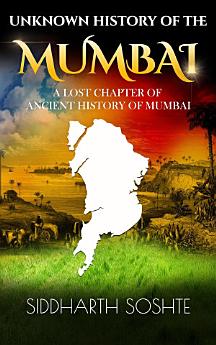Unknown History Of Mumbai: A Lost Chapter of Ancient History of Mumbai
About this ebook
The journey of Mumbai to achieve this global stature has been a long and arduous one, spanning over two thousand years. Several dynasties ruled here, contributing to its growth before fading into history. For centuries before the British, many kingdoms flourished on these islands, as evidenced by the ancient caves, forts, and temples that still stand in and around Mumbai. References to places like Walkeshwar and Banganga can even be found in the Skanda Purana.
While Mumbai contributes the most to the state's and nation's economic growth today, it has witnessed several political, cultural, and religious upheavals. The city has seen both creators and destroyers. Over the centuries, Mumbai has undergone multiple transformations, including changes to its very name. The name Mumbai was bestowed upon the city in the 14th century, as mentioned in the Mumbadevi Mahatmya. However, its oldest name was Puri, the ancient capital of Konkan. This Puri was surrounded by the sea on three sides, and historical references to it date back to the 4th century CE. In ancient times, the city was also known as Karpardi Dweep or Kawadi Dweep. Hundreds of years later, during the reign of King Pratap Bimba, Mumbai Island came to be known as Mahikavati or Bimbasthan. During the reign of King Bhimdeva, Mumbai was known as Bhimpuri. Eventually, with blessings from Goddess Mumbadevi, the locals expelled Mubarak Khilji, and the city came to be known as Mumbai or Mumbapuri. During the Gujarat Sultanate, it was referred to as Manbai. Later the Portuguese came and gave the name Bombay to Mumbai Island and attempted to erase its original identity. They not only renamed the city but also destroyed much of its heritage, including ancient inscriptions, many of which were sent to Portugal and never seen again. When the British took over after the Portuguese, they ruled the islands for 286 years. Unlike the Portuguese, the British adopted a more constructive approach, preserving and documenting Mumbai's rich history while simultaneously modernizing the city.
The ancient references to Puri in the historical records of North Konkan are numerous, yet its exact location has not been definitively established. However, a careful study of these records, coupled with the existence of ancient sites like Walkeshwar and Banganga, strongly suggests that Mumbai was indeed the Puri mentioned in historical texts. This book is an attempt to present evidence that Mumbai was the ancient capital of Konkan, known as Puri. While previous attempts have been made to locate Puri, this is the first time a conclusive argument has been made, supported by evidence.
It is hoped that this book will inspire further research and lead to the discovery of new evidence, ultimately establishing that Mumbai was indeed the Puri of antiquity. As the poet Ravikriti aptly described centuries ago, Mumbai is the Lakshmi (goddess of wealth) of the western seas, a description that still holds true today. With a sincere desire to bring Mumbai's ancient history to light and honor those who contributed to its glory.
Ratings and reviews
- Flag inappropriate
- Show review history
- Flag inappropriate




